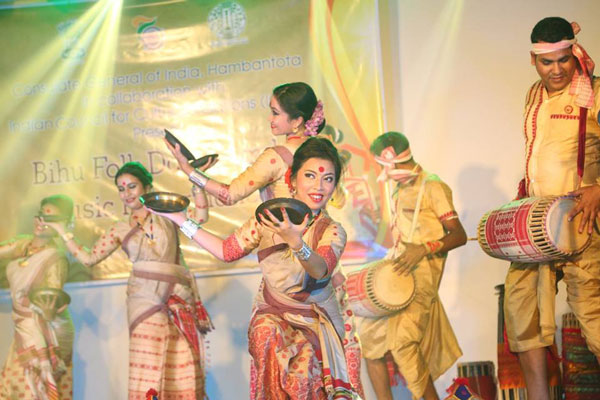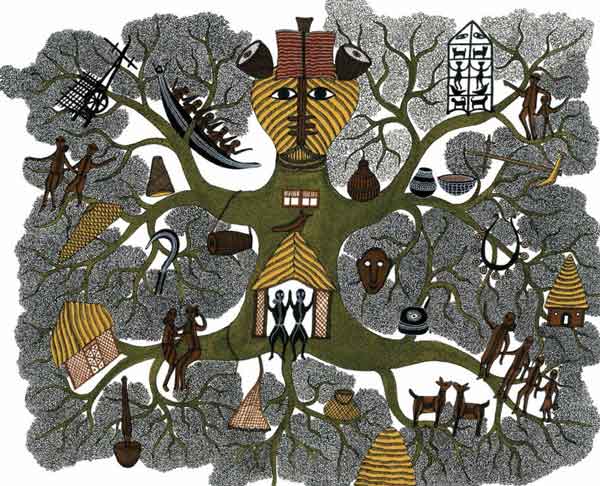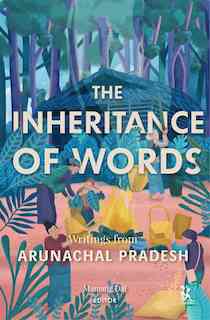
The objective of the scheme is to make special efforts to encourage folk and tribal arts and to frame special programmes for the preservation and strengthening of the vanishing art forms. Through this scheme, the root of the Indian culture is explored and the artistes from the rural belt are provided with a stage to showcase their talent. Every folk and tribal arts festival is followed by seminars, discussing the art forms and the numerous ways to preserve the vulnerable heritage.
In view of the objectives, a series of Festival, Seminar and Exhibition on tribal and folk arts namely, ADI VIMB were organised during the financial year 2014-15 in Assam, Andaman & Nicobar Island, Bihar, Jharkhand, Manipur, Odisha, Sikkim, Tripura and West Bengal […]
Source (accessed 10 July 2019): https://ezccindia.org/promotion-and-preservation-of-tribal-and-folk-arts.html
The National School of Drama, New Delhi, organized Adivasi Adivimb, a three-day festival of tribal dance, music and theatre (December 27-29) at Dwaronda village, Santiniketan. The programme – conceived by eminent theatre personality, Ratan Thiyam […]
The festival, in its fourth year, is an initiative taken by Thiyam to contribute to the growth of tribal art and culture across India. It provides the artists assembled from different corners of the country with an opportunity to interact and exchange ideas amongst themselves.
Adivasis: India’s original inhabitants have suffered the most at its hands | Read the full report in Scroll.in here >>
Their presence in India pre-dates the Dravidians, the Aryans and everyone else. Yet they have no political power and most of them live below the poverty line. […]
Tribal people, accounting for 8.2% of India’s population, are spread all over India’s states and union territories. Even so, they can be broadly classified into three groupings. The first consists of populations who predate the Indo-Aryan migrations, and are termed by many anthropologists as the Austro-Asiatic-speaking Australoid people. The Central Indian adivasis belong to this grouping. The other two groupings are the Caucasoid and Sino-Tibetan or Mongoloid tribal people of the Himalayan and North Eastern regions who migrated in later periods.
Article 366 (25) of the Constitution defines scheduled tribes as “such tribes or tribal communities or part of or groups within such tribes or tribal communities as are deemed under Article 342 to the Scheduled Tribes for the purposes of this Constitution”. The criteria for classification being geographical isolation, backwardness and having distinctive culture, language, religion and “shyness of contact”.
Scheduled tribes are found in the greatest numbers in Madhya Pradesh (12.23 million, or 20.3% of the state’s population), Maharashtra (8.58 million or 8.9%), Odisha (8.15 million or 22.1%), Jharkhand (7.1 million or 26.35%), Chhattisgarh (6.16 million or 31.8%), Andhra Pradesh including Telangana (5.02 million or 6.6%), and West Bengal (4.4 million or 5.5%).
By proportion, however, the populations of states in the North East have the greatest concentrations of scheduled tribes. Thirty one per cent of the population of Tripura, 34% of Manipur, 64% of Arunachal Pradesh, 86% of Meghalaya, 88% of Nagaland, and 95% of Mizoram are scheduled tribes. Other heavy concentrations are in Dadra and Nagar Haveli, and Lakshadweep (94%).
Still, if a headcount is done, the overwhelming numbers are in Central India. […]
A popular Gond song goes:
“And the Gods were greatly troubled/ in their heavenly courts and councils/ Sat no Gods of Gonds among them. / Gods of other nations sat there/ Eighteen threshing-floors of Brahmins/ Sixteen scores of Telinganas/ But no Gods of Gonds appeared there/ From the glens of Seven Mountains/ From the twelve hills of the valleys.”
Source: Adivasis: India’s original inhabitants have suffered the most at its hands
Address: https://scroll.in/article/773759/adivasis-indias-original-inhabitants-have-suffered-the-most-at-its-hands
Date Visited: 19 February 2023

Childhood | Gond art and culture | Trees >>

Ādivāsi [ādibāsi] may be used in accordance with local conventions; and increasingly so for official purposes (e.g. in “Conserving Tradition and Practices of Adivasi Communities in India” published on NIDM.gov.in); Dr. Ivy Hansdak clarifies:
“Adivasi – which is derived from Sanskrit – is applied to the dark-skinned or Austro-Asiatic indigenous groups of India (usually those from Eastern India). It is a commonly-used term in Jharkhand, Bihar, West Bengal and Odisha. It is also used by the local Mongoloid tribes of North Eastern India for the migrant workers who were brought in as indentured labourers to work in tea plantations during the colonial period. ‘Tribal’ is a very broad term in the English language and includes all the different indigenous groups of India. The terms ‘indigenous’ and ‘aboriginal’ are not used often as the government claims most groups are indigenous in India. ‘Denotified Tribes’ is only used for those nomadic tribes who were notified as ‘criminal tribes’ during the British Raj [colonial rule]; later they were ‘denotified’ but still bear the stigma.” (emails dated 2020 & 2023)

The Inheritance of Words: Writings from Arunachal Pradesh edited by Mamang Dai
More about Fiction & Poetry >>
V. B. Ganesan reviews Kuldeep Kumar’s The Untold Story of Tripura’s COIN Campaign | Read the full review in The Hindu >>
The Northeast presents a complex picture, where stunning natural beauty combines with ethnic violence and insurgent movements. From Assam to Tripura, the region of the Seven Sisters has become a hot topic for strategists and social activists, who have debated on how to bring about normality and connect the region, emotionally and physically, with the rest of India. […]
Tracing the roots of unrest, Kumar points out that Tripura’s tribal population, which stood at 52.89 per cent in 1901, came down to 31.8 per cent in 2011 with the influx of refugees during Partition and again after the liberation of East Pakistan/ Bangladesh. As a result, many tribal people lost their land and were reduced to working as landless labourers. […]
However, charting out the path ahead, Kumar says that despite various positive developments, much remains to be done to uplift the economic status of the tribal people and improve their access to quality education, health, sanitation, drinking water and physical infrastructure. In this respect, he also points out that the Tripura Tribal Areas Autonomous Development Council is an extremely important institution geared towards fulfilling the aspirations of self-administration by tribal people. He also cites the highly visible role of women in the fight against insurgency. […]
See also
Audio | Santali Traditional and Fusion Songs: Ghosaldanga Bishnubati Adibasi Trust – West Bengal
Crafts and visual arts | Masks
India’s tribal, folk and devotional music: Secular and ceremonial songs
Memory of the World Programme – Unesco
Music and dance | Musicology | Adivasi music and the public stage by Jayasri Banerjee
Video | Banam lutes and fiddles of the Santal people – Jharkhand & West Bengal
Video | Celestial Dancers of Manipur
Video | Cultural traditions of the Halakki people – Karnataka
Video | Khasi musical heritage of Meghalaya
Video | Kota women’s dance: Shivaratri celebrations – Nilgiris – Tamil Nadu
Video | Santali video album “Ale Ato” (Our Village, Part 1 of 2) – West Bengal
Video | South Gujarat tribal music documentation by Bhasha – Gujarat
Video | Tribes in Transition-III: “Indigenous Cultures in the Digital Era”
Video | Safe contents for educational use on many topics (music, visual arts and more)